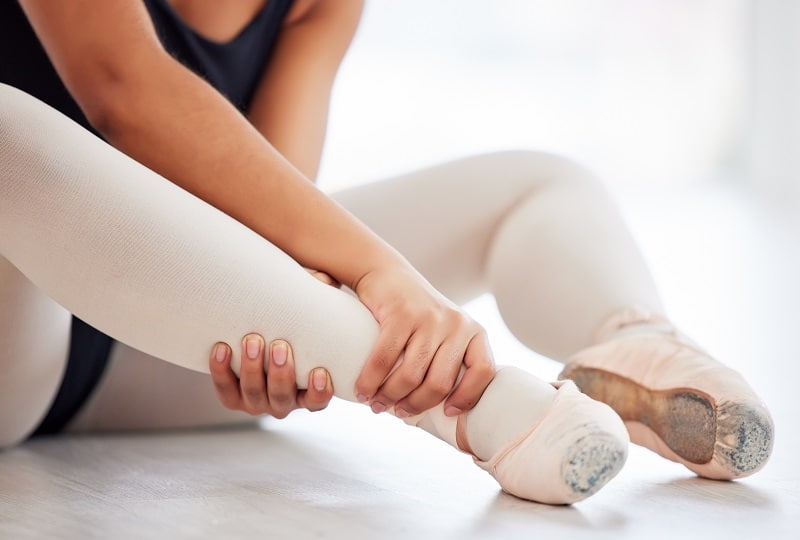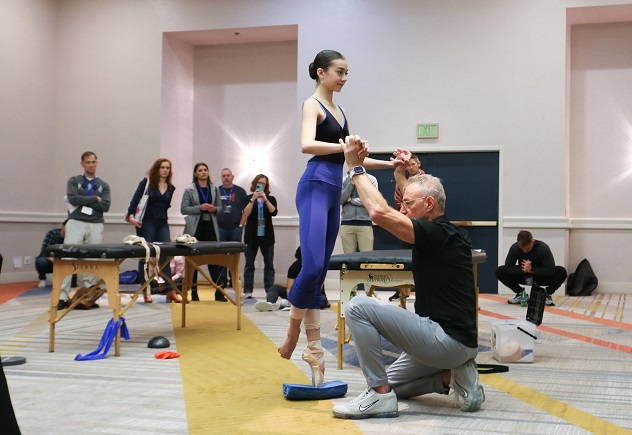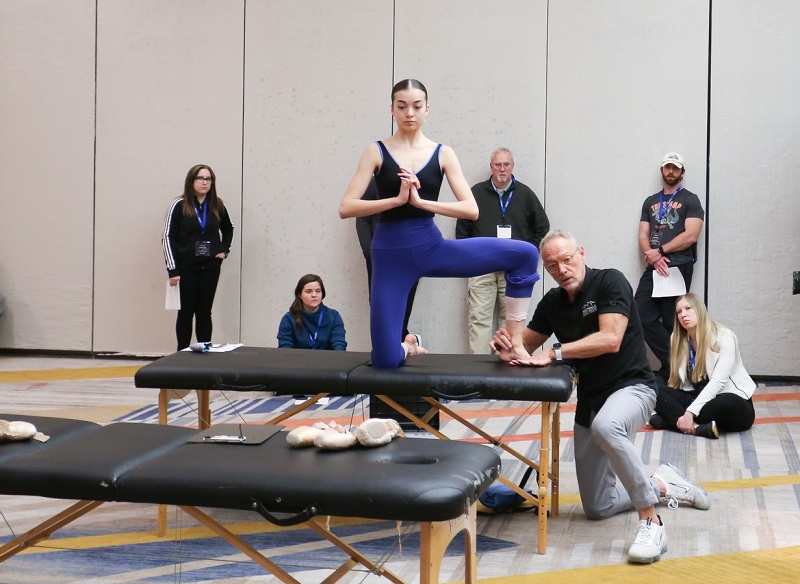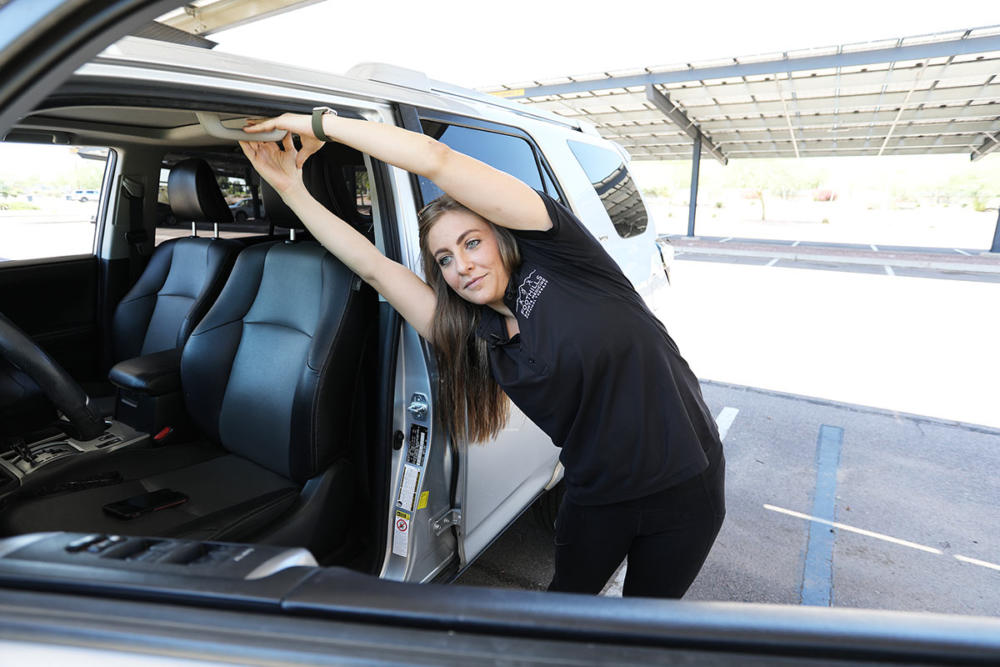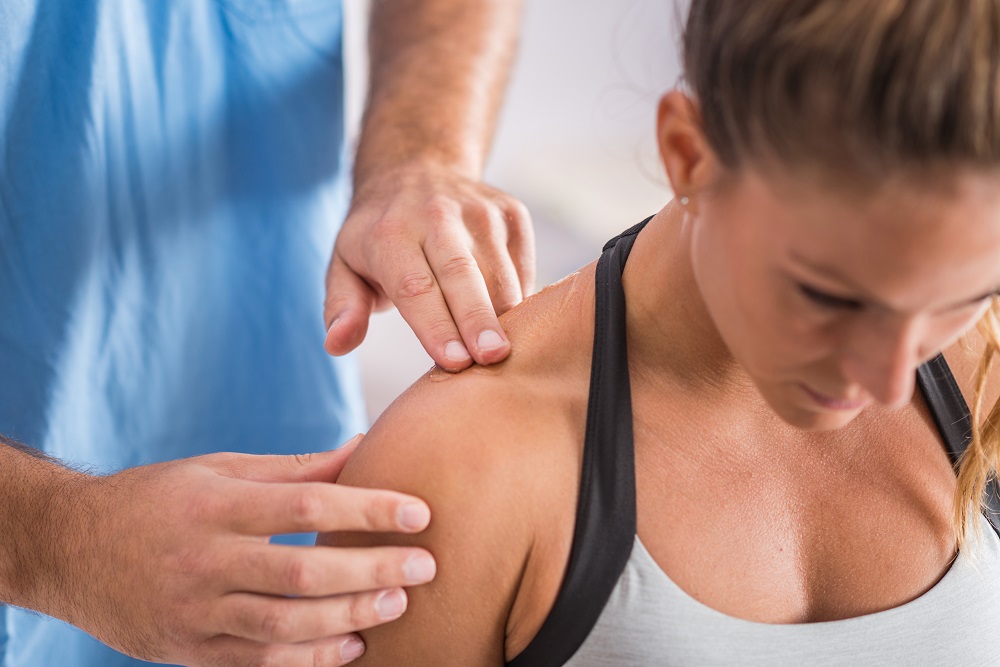by Itamar Stern, PT North Central Phoenix Location
I often get asked by parents if physical therapy is a good option for ballet and modern dancers. My common response; every sport has different requirements for strength, flexibility, and stability. In most sports, actions are performed within normal limits of the human body’s range of motion (ROM), in other words, how far a joint can be moved. However, dancers require an abnormally large ROM to perform their craft at the highest level and avoid injury. Injuries experienced by ballet and modern dancers are unique and require an understanding of what happens to the muscles, ligaments, joints, and bones under that kind of pressure. Physical therapy for ballet and modern dancers can address issues, prevent further injury, and allow function at the highest level.
What’s different about dance rehab?
Dancers are artists, and as such, they are concerned with precision and presentation, clean lines, and perfect body position. The emphasis is more on grace and flow than power and speed. Dancers need to be highly flexible. But when they are lacking flexibility in one joint, they compensate by overloading on another structure resulting in injury. A physical therapist treating dancers needs to be aware of their concern with body image and create strengthening programs that do not bulk the dancer while being aware of caloric intake and eating disorders that can, unfortunately, be common in the sport.
Non-dance training options to consider
Most dancers have less exposure to trainers, physical therapists, and doctors than athletes in other sports. Dancers often lack education about non-dance-related training that might contribute to their success, like nutrition, core strengthening, and other strategies.
Causes of dance injuries by structure:
Ballet and modern dance injuries can occur in various parts of the body—in all types of structures and tissues. The following lists break down where injuries come from and why they occur.
- Bone: Fractures, stress fractures, and stress reactions can be caused by overuse, poor nutrition, and falls.
- Ligament: Tears and sprains are caused by muscle weakness, fatigue, poor proprioception (balance), and poor technique/mechanics.
- Muscle: Tears and strains are caused by overuse, weakness, lack of rest, and poor hydration and nutrition.
- Joint: Sprains, cartilage injuries, and, ultimately, arthritic changes are caused by poor mechanics, overuse, weakness, and poor nutrition.
Common dance injuries by joint:
- Neck: Strains of muscles caused by sudden high-velocity movements.
- Shoulders: Strains along with rotator cuff and labrum injuries related to lifting can occur. This is caused by weakness, lack of control, and lack of core strength.
- Low back: Muscle strains, spondylolisthesis (displaced vertebra), and disc injuries are related mostly to poor lifting mechanics and weakness of core muscles.
- Hips: Hip flexor tendonitis occurs due to weakness and ROM limitations (in the hamstrings), impingement syndrome (pinched nerves), and labrum tears also occur due to relative weakness and lack of appropriate mobility.
- Knees: There are many different ways dancers can injure their knees. Strains to tendons and ligaments can occur due to poor hip strength and limited ROM. Patellofemoral pain is caused by weakness of quad muscles and poor hip and foot position and strength. Meniscal tears can also occur due to twisting injuries.
- Shins: Shin splints, stress reactions, and fractures are caused by overuse, poor mechanics up and down the kinetic chain, and possibly poor nutrition.
- Foot and Ankle: Ankle sprains are a common injury among dancers and become much more complicated with added plantar flexion (point position). Tendon, metatarsal, big toe injuries (due to arch collapse), forced turnout, lack of ROM, and ankle impingement (due to poor mechanics, weakness, and overuse) are all possible injuries.
Physical Therapy Evaluation: What do we look for?
There are many different injuries that can affect dancers, so it is important to be evaluated by a physical therapist that can identify the exact cause of the problem. The goal of a physical therapist’s evaluation is to get a complete picture of an individual dancer’s areas of concern, pain, and weakness. We then design a program to correct these issues, prevent further injury, and allow function at the highest level.
A physical therapist will evaluate:
- General posture of the shoulders, pelvis, girdle, and feet.
- General ROM and mobility of the trunk, pelvis, extremities, ankles, and feet/toes.
- ROM and mobility relate specifically to dancing. This includes body movements in turnout, point position, grand battement (straight leg raise in flexion, extension, and abduction), lumbar flexion/extension, and big toe mobility.
- Functional mobility. We evaluate how dancers squat in parallel and turnout, perform a drop test, a straight leg raise, forward and center split, and hip extension.
- Strength (generally and specific to dance) of the abdominals, hips, knees, ankles, and general upper body.
- Proprioception (balance) is measured by single-leg stance tests and step-to-stability tests in three planes of movement and point position.
Prevention:
It is imperative to recognize limitations in strength, flexibility, and mobility prior to injury. This can be done by utilizing a professional evaluation and designing a program to allow pain-free performance. A professional evaluation on an individual basis is most accurate, but a general program addressing common limitations can be applied to benefit groups as well.
Treatment:
Treatment is specific to the individual dancer’s dysfunction and deficiencies, utilizing specific physical therapy techniques developed over years of experience. Foothills Sports Medicine North Central Phoenix clinic specializes in the treatment and prevention of dance injuries. We treat dancers from all dance disciplines, young to professional, and from companies and studios in all parts of the Western U.S. Additionally, we have designed prevention routines specific to one’s dance discipline, age, level, and goals. Dancers are some of the hardest-working athletes and are under-served when it comes to injury prevention, education, and treatment.
Conclusion:
Dance and ballet is a grueling and competitive art and sport, making it difficult to take time off to recover from injury. However, continuing to dance and perform on an injured body part will lead to more pain and, in many cases, further damage. Ballet and modern dancers seeking treatment through physical therapy first can save time in healing and prevention from further injury. Our highly-trained staff offers a free assessment of any injuries or pain a dancer might have.

